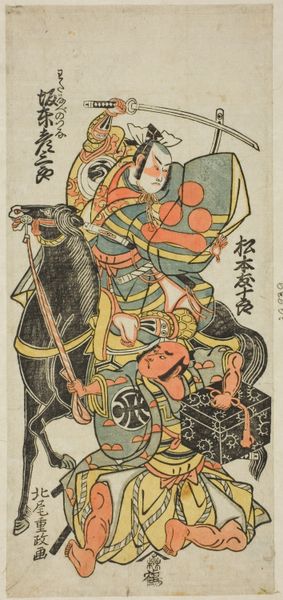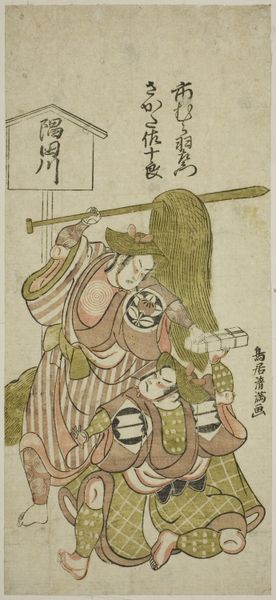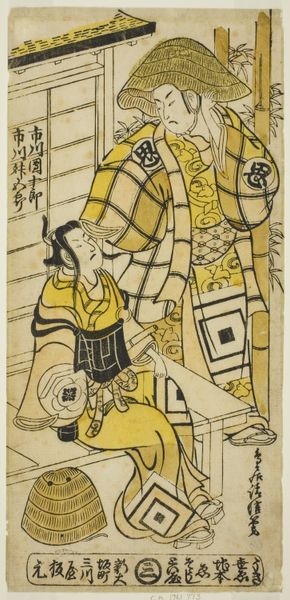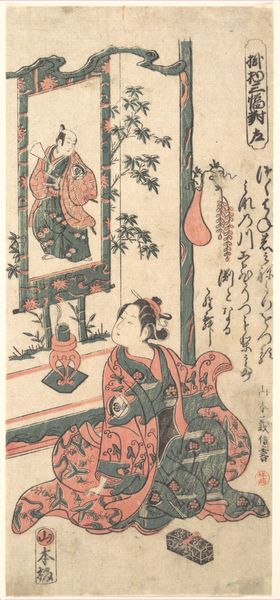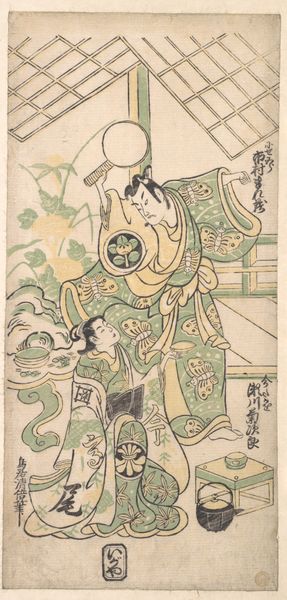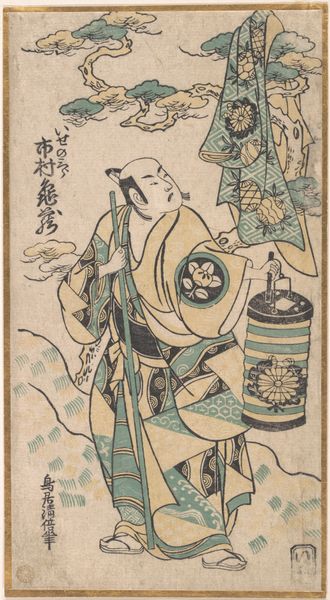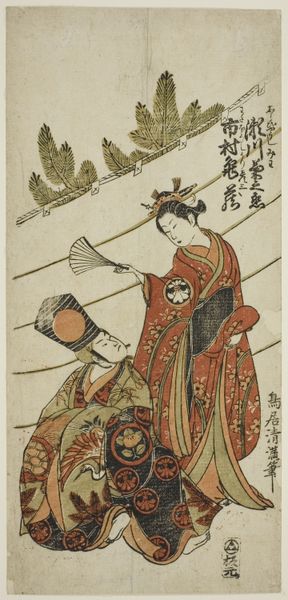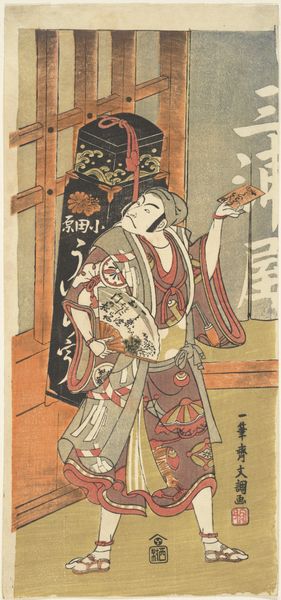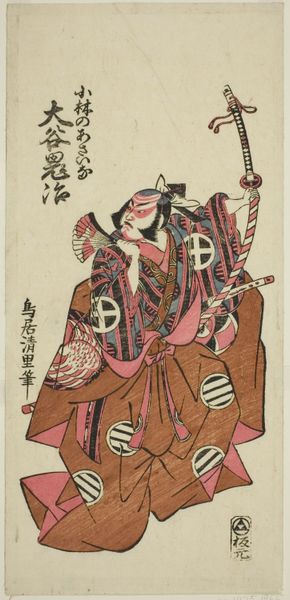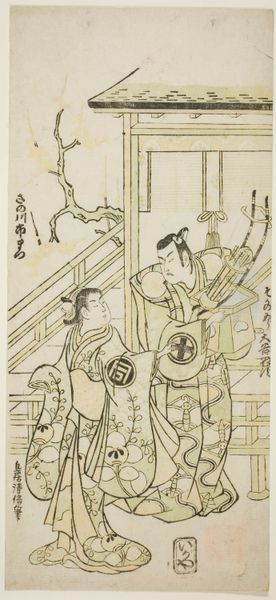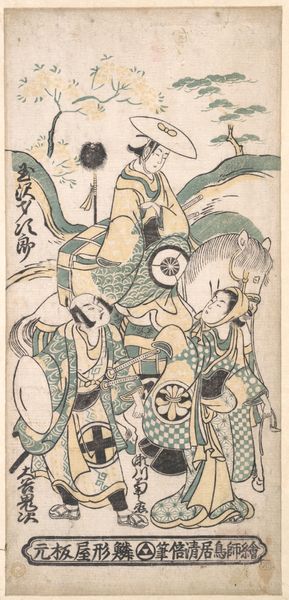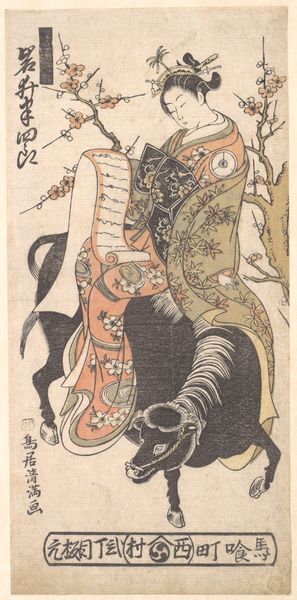
The Actor Bando Hikosaburo II as Fujitaro, disguised as the ferryman Tomokichi, in the play "Shomei Mugen no Kane," performed at the Nakamura Theater in the ninth month, 1767 1767
0:00
0:00
print, woodblock-print
#
portrait
# print
#
asian-art
#
ukiyo-e
#
japan
#
figuration
#
woodblock-print
#
genre-painting
Dimensions: 12 × 5 3/8 in.
Copyright: Public Domain
This print by Kitao Shigemasa, made around 1767, shows an actor in character. It's a woodblock print, a process known as *ukiyo-e*. This wasn't just art; it was a whole industry, involving designers, carvers, printers, and publishers. The key is the wood. The artist would create a design, then skilled artisans carved separate blocks for each color. Paper was laid on the block and rubbed to transfer the image. It's a labor-intensive process, but it allowed for the mass production of affordable art for Japan's growing urban population. Look closely at the lines, the flat planes of color, and the way the artist captures the texture of the actor's robes. The materiality of the print—the wood, the ink, the paper—dictates the aesthetic. This wasn’t high art in the traditional sense, but it was a vital part of the culture, reflecting the tastes and interests of everyday people. It blurs boundaries between art, craft, and commercial production.
Comments
No comments
Be the first to comment and join the conversation on the ultimate creative platform.
